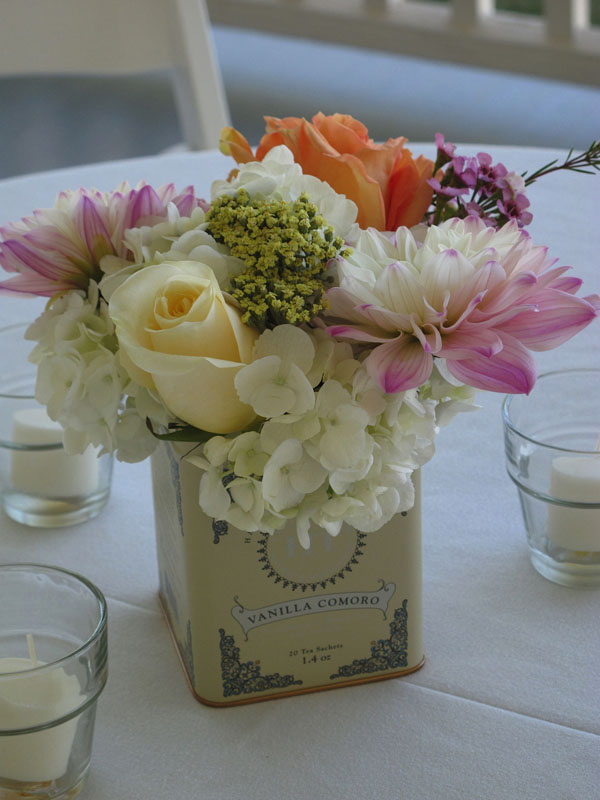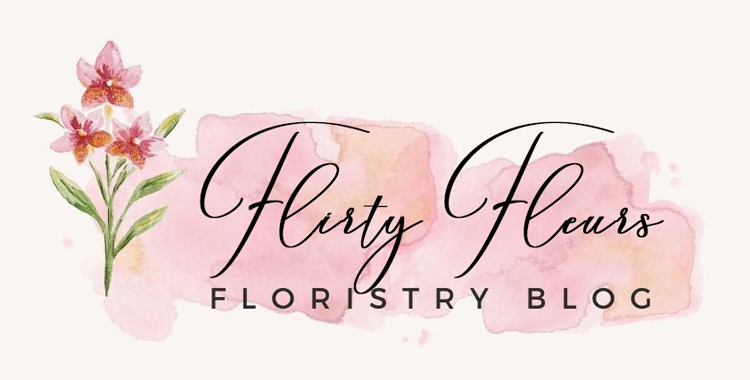
Years ago I attended an educational seminar for florists where we were taught “how to price a wedding”. It wasn’t a tutorial on how to multiple by 3 and add labor to determine the cost of an arrangement, rather it was about how to sell the wedding to the customer. I was so eager to find out how to best present my proposal and increase bookings for my new business. This was exactly the sort of help I needed.
The big secret was that we should offer 3 price points for each item creating a high, medium and low price point scenario. Each price point would have a description so that the customer can see that they’ll get more or better flowers in the higher price categories. “No one wants to pick the lowest price point for their wedding day” is what the presenter purported. Clearly he knew more about consumer psychology than I did. He asserted that most people will choose the middle price point and some will choose highest price points for at least some of the items. This would lead to bigger sales. We were advised to not talk about budget up front because people don’t know what they need to spend. His premise was that they’d need to see our proposal to understand what the cost will be.
Maybe he was correct in thinking that no one “wants to” pick the lowest price point, but you know what I found?…plenty of people DID! In fact, most people did. The reason is that your customer is a real person with a real budget and real money to spend so the bottom line is more important than the perception that they chose the “lowest” price. The idea that you could persuade your customer to choose “more” or “better” flowers was dead wrong in my experience. It was also a lot of work to put together those proposals and ended up being a huge waste of my time.
What I’ve discovered over the last 11 years is that most people DO have a good idea of what they can spend on their wedding flowers. Couples are increasingly aware of how much they have to spend on their big day. (We can thank Google and endless wedding sites for educating our customers on approximately what portion of their wedding budget should be dedicated to each category.) The approach I use, and what I’d encourage other florists to do who may be struggling to guess how much a potential customer has to spend, is to simply ask the question, “what is your ideal floral budget?” If it’s way off the mark for what they need (for example they have a $3,000 budget in mind for 25 centerpieces, 8 bridesmaids, ceremony flowers, plus the rest of the kit-n-kaboodle) you can get that part of the conversation dealt with immediately. That’s where I’d explain that they are probably about $1,000 below a realistic starting point.
This is counter to everything I observed while working for other florists and certainly opposite from the way I handled things for the first several years on my own, but it comes down to a basic rule of contracts; it’s essential that there is a meeting of the minds. It doesn’t matter if I love a couple’s color palette or they love the last wedding I featured on my blog if we are not on the same page regarding pricing.
The most important thing about this upfront approach is that it saves everyone time. The customer can decide whether they have the additional funds to spend and you can spare yourself the time and effort of putting together a proposal for someone who was never going to be your customer in the first place because they simply need something that you can’t provide for the price.
I do get inquiries from couples who aren’t sure what their floral budget should be, but when I offer an approximate range that helps to ensure that we are on the same page before diving into the proposal process. Once I get some preliminary info about the size and scope of a wedding I propose a “starting point” (maybe $4,000-4,500 or $3,000-4,000) and then I know how they feel about that. If someone is shocked by my estimate, then we’re just not a good fit. I’m OK with that. I can’t be the right choice for everybody. I’m comfortable with my pricing. Most often what results is the customer feels reassured that I can work within their ideal budget and I feel reassured that it’s worth investing my time to create a proposal and share my ideas.
My secret to selling a wedding is honesty. Being honest with customers about what flowers cost, what you can provide within their budget and what you cannot pull off is the easiest and best way to book weddings. Of course this requires that you honor your pricing structure and you value your own time enough to be upfront about what you charge. I hope you know you’re worth it!
Floral designers, how do you proceed with potential new clients?
How do you sell weddings to your clients?
How detailed are your proposals?
Do you charge for consultations?
How do you get the client to talk about their budget?

Thank you, Alison, for this helpful article. Over the years I’ve heard other designers suggest we offer three price points as a selling tool and I have to agree with what you’ve said here – I found most clients were happy picking the lowest option. Saves a lot of time and heartache to get the budget upfront. ~Alicia
Contact Information:
Alison Ellis
website: floralartvt.com
blog: floralartvt.com/blog
boutique. floral. design.






Terrific article! Up front and honest…always best. Besides, all flowers are beautiful, regardless of their price. A good designer can make even the most simple bouquet beautiful, and one any bride would cherish.
Right on, Alison!
Great tips, good common sense, pretty arrangements you shared too. Thank you! I have been trying a new approach for me, to give the client two prices- one their ideal as I interpreted what they have told me, to give them an idea of where they are at, and one using substitutions that give a similar look.
Great article! Honesty has always served me well! Thank you for sharing! 🙂
Alison, thank you for speaking so well on such a painful subject. Alicia and Chuck, thank you for publishing it!
We all need to hear more of this!
Loved this post. How candid and I couldn’t agree more. My first consultation is free and very basic information (takes about 45 minutes). At the end I ask for their budget and I can tell them right away if it is realistic. It has saved me a lot of time and heartache 😉 Once they book, we can get down to nitty gritty and provide a more detailed quote.
Loved this post! I have always asked up front what a brides budget is. That way I know what to offer and what not to offer. I have always thrown in something for free if they book with me within a couple of weeks
of the consultation. Free toss bouquet, mothers corsages, groomsmen bouts. etc.
I’m so glad to know that my experience is shared with others and can perhaps help someone else avoid the trap of upselling! Seriously, it’s so 90’s to upsell. We live in a real world where google can answer just about any question our potential clients have before they even get to us. They know what’s up when it comes to budgeting.
Spot on, my friend! I always discuss budget in a consultation. Even if clients don’t have an exact number in mind…I’ve found they almost always have a ballpark range that they expect to stay in. They may need help articulating it, but that’s what we’re here for! I think this part of the conversation helps to build trust and helps reinforce the value of the relationship.
Great article & spot on! After I have met with a client, I typically put together a word document, I call it a palette, by cutting and pasting images of all the flowers we have discussed (into the word doc) so that the client can see what the colors and textures will look like all together. Kind of like a Pintrest board. This extra step does take a good bit of time and effort but it is important for me to make sure the the bride and I are on the same page! After wasting a considerable amount of time in years past going to all this effort only to learn that my designs and the clients budgets were way off, I decided to put together a “representative price list” which I email to the bride then they first inquire with me. I tell them I will email them a wedding flower check list and the pricing guidelines and once they have reviewed this information, we can schedule a consultation. Like many of you have said, if my “representative pricing” scares them off, we were not a match anyway. Since I started managing my inquiries this way, I have cut back on wasted time and energy by “qualifying” my leads.
Samantha, I love this idea.
I am stealing it! 🙂
I don’t have a lot of experience yet, thank you for sharing yours so that I can cut back on the guesswork for both myself and my clients.
Great article with good advice even for non-florists. I run a group of wedding officiants in NJ, and it’s rare than our couples have any idea what a really beautifully written ceremony is going to cost. Giving them options at different price points actually allows them to get the ceremony that is most appropriate at a price that is not a shock.
Very informative article with the perspective earned by experience. In my limited consults I find most brides don’t have a budget in stone because they don’t know what flowers are named ,forget cost. They just have a picture in their mind of the day and need help defining it. If you give them a choice of $400 or $4000 they will go with the lower budget. As you stated – the meeting of minds. They also forget that the candles,linens,etc are not part of he floral budget but can be even more expensive. Given guidance, a good balance and their dream can be achieved. Love your pictures!
Thanks, Terri! You are right that linens, candles, etc. do add to the total budget and are not necessarily part of the floral budget, but are an important piece of the decor. I’ll often provide candles and if it takes them over and above the desired budget I consider it an “add-on” item. They can either buy them from me or get them somewhere else. It’s up to them to find the “balance” as you said.
I couldn’t agree more. Great article with actionable tips. Strategies must change as the internet evolves so rapidly. One thing that doesn’t change is how one’s honesty is an asset.